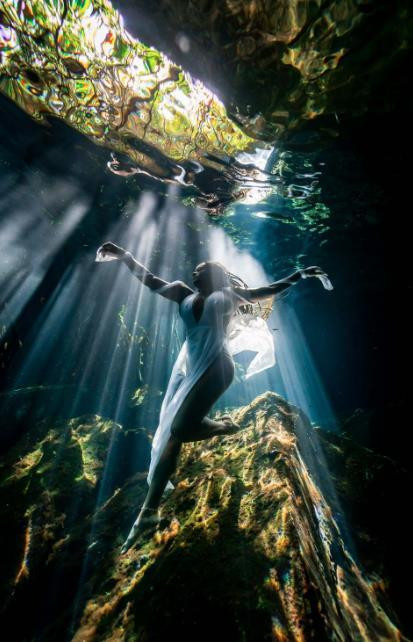Exploring the Wonders of Cenote Photography
Hidden within the lush landscapes of Mexico's Yucatan Peninsula, a mesmerizing natural phenomenon awaits adventurers and photographers alike. Cenotes, unique sinkholes formed by the collapse of limestone bedrock, offer a glimpse into an enchanting underwater world, making them a captivating subject for photographers. From the shimmering turquoise waters to the breathtaking play of light and shadows, cenotes provide an unparalleled opportunity to capture awe-inspiring images. In this article, we delve into the art of cenote photography and uncover the secrets to capturing these ethereal wonders.
I. The Allure of Cenotes The Yucatan Peninsula is home to over 6,000 cenotes, each with its own unique character and charm. These natural sinkholes offer a fascinating blend of geological wonders and ecological diversity. With their crystal-clear waters and fascinating rock formations, cenotes serve as portals to an otherworldly realm. Photographers are drawn to the ethereal atmosphere, the interplay of light and shadows, and the opportunity to capture the vibrant colors of this subterranean paradise.
II. Equipment Essentials To make the most of your cenote photography adventure, it's crucial to have the right equipment. Here are a few essentials:
A Reliable Camera: Opt for a high-quality DSLR or mirrorless camera that allows manual control over settings, such as aperture, shutter speed, and ISO. This flexibility enables you to adapt to the unique lighting conditions found in cenotes.
Sturdy Tripod: Since cenote photography often involves long exposures in low-light conditions, a sturdy tripod is essential to keep your camera steady and avoid blurry images.
Wide-Angle Lens: Cenotes are often vast and expansive, making a wide-angle lens ideal for capturing the grandeur of these natural wonders. A lens with a focal length between 16mm and 35mm will help you capture the intricate details while encompassing the entire scene.
Waterproof Housing or Bag: Many cenotes provide the opportunity for underwater photography. Investing in a reliable waterproof housing or bag for your camera will allow you to explore the submerged world and capture stunning images from beneath the surface.
III. Mastering Light and Composition Cenotes are renowned for their unique lighting conditions, which can be both a blessing and a challenge for photographers. Here are some tips to help you make the most of the lighting and composition:
Timing is Everything: Plan your visit to a cenote during the early morning or late afternoon when the sunlight filters through the openings, creating enchanting rays of light. These golden hours offer a magical atmosphere and enhance the overall mood of your photographs.
Silhouette and Shadows: Take advantage of the interplay between light and shadows in cenotes. Experiment with backlighting to create dramatic silhouettes or capture the intricate details of the rock formations.
Leading Lines: Cenotes often feature stunning geological formations that can serve as excellent leading lines in your compositions. Use these natural lines to guide the viewer's eye through the image and create a sense of depth.
IV. Underwater Exploration To truly uncover the full magic of cenotes, don't hesitate to take your photography beneath the surface. Snorkeling or scuba diving in cenotes provides a unique perspective, allowing you to capture the ethereal beauty of underwater stalactites, crystal-clear waters, and the mesmerizing dance of light and shadows. Ensure you have the necessary underwater housing or bag to protect your camera and experiment with wide-angle lenses for expansive underwater shots.
V. Respecting Nature and Local Communities As photographers, it's our responsibility to respect the natural environment and the local communities surrounding cenotes. Avoid touching or disturbing the delicate ecosystem, follow any rules or guidelines provided by the cenote owners, and be mindful of other visitors. By practicing responsible photography, we can preserve the beauty of cenotes for future generations.
For more info :-



Comments
Post a Comment